I am working with a dataset of countries, with different values for different points in time. There is one observation each month, so I have used the as.date fucntion such that dates are 01-07-2018, 01-08-2018 etc. For each country and each date exist a corresponding value. I want to transform this into an dataframe, where all the countries values are aggregated at a date. I have tried the reshape function such that
reshape(Origin_wide, idvar = "Origin", timevar = "V5", direction = "wide")
V5 being the date variable and Origin being the country. This is as far as I can tell dropping the as.date set, such that the dates and the corresponding values is no longer treated as such. Can it be done in a more smooth way ? The time series aspect of the data series disseapears ones the reshape function is lost, such that i cannot difference the time series or plot it by date etc. Furthermore the dates are getting a "value" prefix, which is the same problem as far as I can tell.
Here is the data structure as it is:
| V5 | Origin | Value |
|---------------------|------------------|----------|
| 01-09-2017 | USA | 45 |
|---------------------|------------------|----------|
| 01-10-2017 | USA | 47 |
|---------------------|------------------|----------|
| 01-11-2017 | USA | 49 |
|---------------------|------------------|----------|
| 01-09-2017 | Canada | 7 |
|---------------------|------------------|----------|
| 01-10-2017 | Canada | 13 |
|---------------------|------------------|----------|
| 01-11-2017 | Canada | 17 |
|---------------------|------------------|----------|
And here is how I would like it to look:
| V5 | Canada | USA |
|---------------------|------------------|----------|
| 01-09-2017 | 7 | 45 |
|---------------------|------------------|----------|
| 01-10-2017 | 13 | 47 |
|---------------------|------------------|----------|
| 01-11-2017 | 17 | 49 |
|---------------------|------------------|----------|
Hope this makes sense. To reproduce a random small version of the data :
set.seed(1)
Data <- data.frame(Value = sample(1:10), Origin = sample(c("Mexico", "USA","Canada"), 10, replace = TRUE))
dates <- sample(seq(as.Date('2018/01/01'), as.Date('2018/05/01'), by="month"), 10, replace = TRUE)
Data <- cbind(dates,Data)
A look on the data as produced by the code

As it is clear here, the values are not defined for all the dates. When this is the case, the value for that date is = 0. So in my first try with reshape it produces NA's for all the dates where there where no observations, which was perfect, because i was able to just put in 0's.